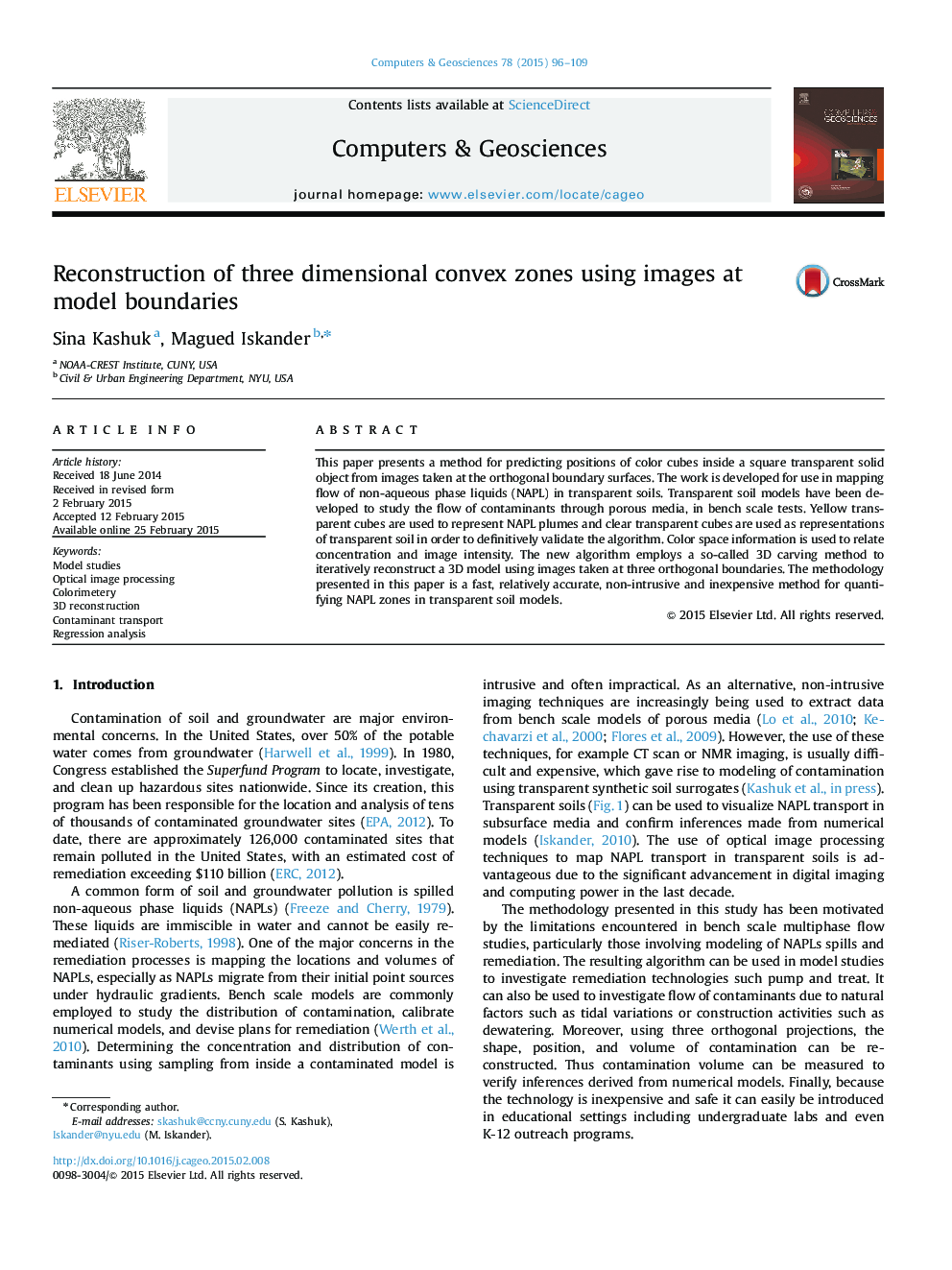| Article ID | Journal | Published Year | Pages | File Type |
|---|---|---|---|---|
| 506858 | Computers & Geosciences | 2015 | 14 Pages |
•Methodology to map flow non-aqueous phase liquids (NAPL) inside transparent soil is presented.•A novel 3D reconstruction algorithm so-called iterative 3D carving is developed.•Iterative 3D carving method has higher efficacy than back projection method.•Application of methodology for modeling with transparent soils is investigated in an experimental model.•The algorithm has higher efficacy when the convexity assumption is satisfied.
This paper presents a method for predicting positions of color cubes inside a square transparent solid object from images taken at the orthogonal boundary surfaces. The work is developed for use in mapping flow of non-aqueous phase liquids (NAPL) in transparent soils. Transparent soil models have been developed to study the flow of contaminants through porous media, in bench scale tests. Yellow transparent cubes are used to represent NAPL plumes and clear transparent cubes are used as representations of transparent soil in order to definitively validate the algorithm. Color space information is used to relate concentration and image intensity. The new algorithm employs a so-called 3D carving method to iteratively reconstruct a 3D model using images taken at three orthogonal boundaries. The methodology presented in this paper is a fast, relatively accurate, non-intrusive and inexpensive method for quantifying NAPL zones in transparent soil models.
